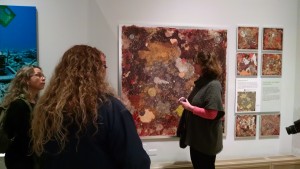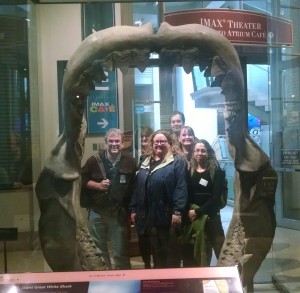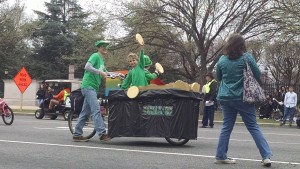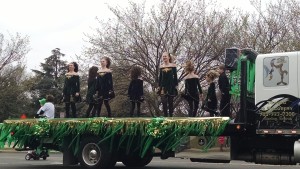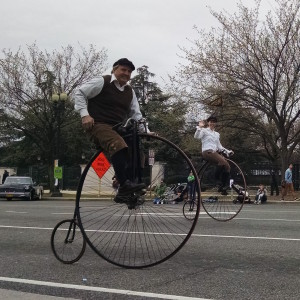Curator-led Tour of the Ocean Hall
Last year we bid on, and won, a curator-led tour of the Sant Ocean Hall at the Smithsonian’s Natural History Museum during the National Zoo‘s Zoofari auction. And, today, we got to cash in our prize.
We arrived at the museum early so that we could have some time in the exhibit before the “hordes” arrived. We met Dr. Nancy Knowlton, a coral reef marine biologist and Sant Chair of Marine Science.
She and I had emailed a bit beforehand, and she had asked what kinds of interests our group had, so she could concentrate on those with her tour. Since we had all been through the ocean hall before, I suggested that she choose some of her favorite objects or objects with an interesting story.
After signing us in, Dr. Knowlton brought us to the entrance of the Ocean Hall. She took us to several things around the exhibit and we asked loads of questions. This included talking about cuttlefish camouflage, the Science on a Sphere, the coral reef aquarium, and the P-T extinction event.
A couple of the most interesting things we talked about were the fluid that the specimens are displayed in, the life in one square foot exhibit, shifting baselines, ocean positivity, and our behind-the-scenes look at the collections.
We stopped to look at one of the giant squid specimens, and Dr. Knowlton talked about the fluid that it is stored in. Originally, such specimens were kept in formaldehyde or alcohol. But, formaldehyde is toxic and that much alcohol in one place could destroy the museum if there was an accident. 3M created a different solution that wouldn’t be as dangerous. However, it turns out the solution is about three times more dense than water. When they put the solution in with the specimens, the specimens floated right up to the top! So, if you look closely at the specimens on display, there are cables and poles keeping them in place.
Dr. Knowlton had a chance to tell us more about her research when she took us back to the Life in One Cubic Foot temporary exhibit. She had developed a way to repeatably test the diversity of coral reefs. To do this, they place a stack of metal plates that’s about a cubic foot in volume. After about a year, they pick the stack up and catalog the large life within it. Then they scrape off the rest of the life and make a “smoothie” that they then identify the various DNAs present to get a catalog of life that’s present. The photographer that was involved in this project was inspired to look at what other life is in one cubic foot elsewhere in the world. This exhibit showcases some of those cubic feet.
We stopped in the fossil area to take our picture with the ancient shark jaws – a shark that makes a great white look like a guppy.
Then Dr. Knowlton brought us to a new education center at the museum – a center where they have a selection of the collection in drawers that visitors can look at, handle (in some cases), and get more information about. She showed us some of the ocean specimens behind the scenes collections at the museum, laboratory.
Finally, she took us back behind-the-scenes. Most of the collections have been moved off-site, due to the dangers of keeping that much alcohol and formaldehyde in one place. However, there are still a few things on the premises – we saw a huge bank of cabinets which held various plant life. She also brought us down to the lab where graduate students and postdocs work on identifying DNA strands of various animals.
To make the day’s adventures complete, we stumbled upon the St. Patrick’s Day parade in DC when we left the museum (on our way to the National Art Gallery to see the Greek Bronzes exhibition), so we stopped to watch.
